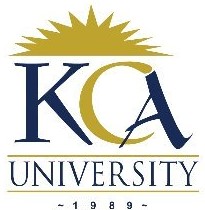
UNIVERSITY EXAMINATIONS: 2012/2013
EXAMINATION FOR THE BACHELOR OF SCIENCE IN
INFORMATION TECHNOLOGY
BIT 2311 NETWORK SYSTEMS DESIGN AND MANAGEMENT
DATE: AUGUST, 2013 TIME: 2 HOURS
INSTRUCTIONS: Answer Question ONE and any other TWO Questions
QUESTION ONE
a) (i) The KCAU corporate LAN consists of one large flat network. You decide to
segment this LAN into two separate networks with a router. What will be the
effect of this change? (2 Marks)
(ii) How many subnetworks and hosts are available per subnet if you apply a /27
mask to the 210.10.2.0 class C network? (2 Marks)
(iii) What is the IP address range for the first octet in a class C address, in
binary form? (2 Marks)
b) Discuss the following software troubleshooting tools:
(i) NMS tools (3 Marks)
(ii) Protocol Analyzers (3 Marks)
c) Discuss briefly Network Management under the following headings:
(i) Network Documentation (4 Marks)
(ii) Network Security (4 Marks)
d) Explain any six rules that should be followed in order to avoid injury when working
with fiber optics. (6 Marks)
e) List four mandatory components that must be set up in Windows Network
Operating System environment to ensure network communication and sharing
(4 Marks)
QUESTION TWO
a) As systems become increasingly distributed, cheaper, and innovative, greater
focus has been placed on strategically arranging them using effective network
design practices to ensure survivability and performance. Strategies and practices
used in the past to deliver survivable and well-performing networks are being
revised in light of more recent IT trends and world events.
(i) When designing a LAN, discuss why it is necessary to consider the
concept of Network Continuity (3 Marks)
(ii) Discuss the concept of disaster recovery (3 Marks)
(iii) Explain the considerations to take into account in order to ensure the
designed LAN lasts 7 to 10 years (2 Marks)
b) When planning the installation of LAN cabling, there are physical areas to
consider. Discuss each of the following areas:
(i) Work Areas (4 Marks)
(ii) Telecommunications Room (4 Marks)
c) Describe the following Ethernet switch operations:
(i) Flooding (2 Marks)
(ii) Selective Forwarding (2 Marks)
QUESTION THREE
a) (i) You download a file from an FTP site on the Internet. What is the highest
layer in the OSI model used in this FTP operation? Explain. (3 Marks)
(ii) The Transport layer can provide reliable networking via
acknowledgments, sequencing, and flow control. Explain how this is done.
(3 Mark)
b) List four motivations for using VLANs in a switched LAN. (4 Marks)
c) What factors would you take into account when choosing between a layer 3
switch and a router? (3 Marks)
d) A network administrator wants to control which user hosts can access the network
based on their MAC address. What will prevent workstations with unauthorized
MAC addresses from connecting to the network through a switch? Explain.
(3 Marks)
e) Which of the following statements correctly describe the differences between
half-duplex and full-duplex Ethernet? (Select two answer choices and provide an
explanation) (4 Marks)
A. Full-duplex Ethernet uses CSMA/CD to prevent collisions.
B. Half-duplex Ethernet uses a loopback circuit to detect collisions.
C. A full-duplex Ethernet card allows 20Mbps for data transmission.
D. Full-duplex Ethernet makes use of two pairs of wires for data.
E. An Ethernet hub can operate both half and full duplex simultaneously.
QUESTION FOUR
a) Describe briefly how the following tools are used in troubleshooting a network:
(i) Digital Multimeters (2 Marks)
(ii) Cable Testers (3 Marks)
(iii) Cable Analyzers (2 Marks)
b) With the aid of a sketch describe the stages of the general troubleshooting process
(8 Marks)
c) Explain briefly any five driving forces that necessitate network management.
(5 Marks)
QUESTION FIVE
a) Explain briefly
(i) The concept of Storage Area Networks (SANs). (2 Marks)
(ii) Two features offered by SANs (2 Marks)
b) Discuss any four issues that commonly cause network problems at the physical
layer. (8 Marks)
c) WANs are groups of LANs connected together with communications links from a
service provider. Because the communications links cannot plug directly into the
LAN, it is necessary to identify the various pieces of interfacing equipment.
Describe the functions of the following WAN devices:
(i) Router (2 Marks)
(ii) CSU/DSU (2 Marks)
(iii) Modem (2 Marks)
iv) WAN Switch ( 2 Marks)
